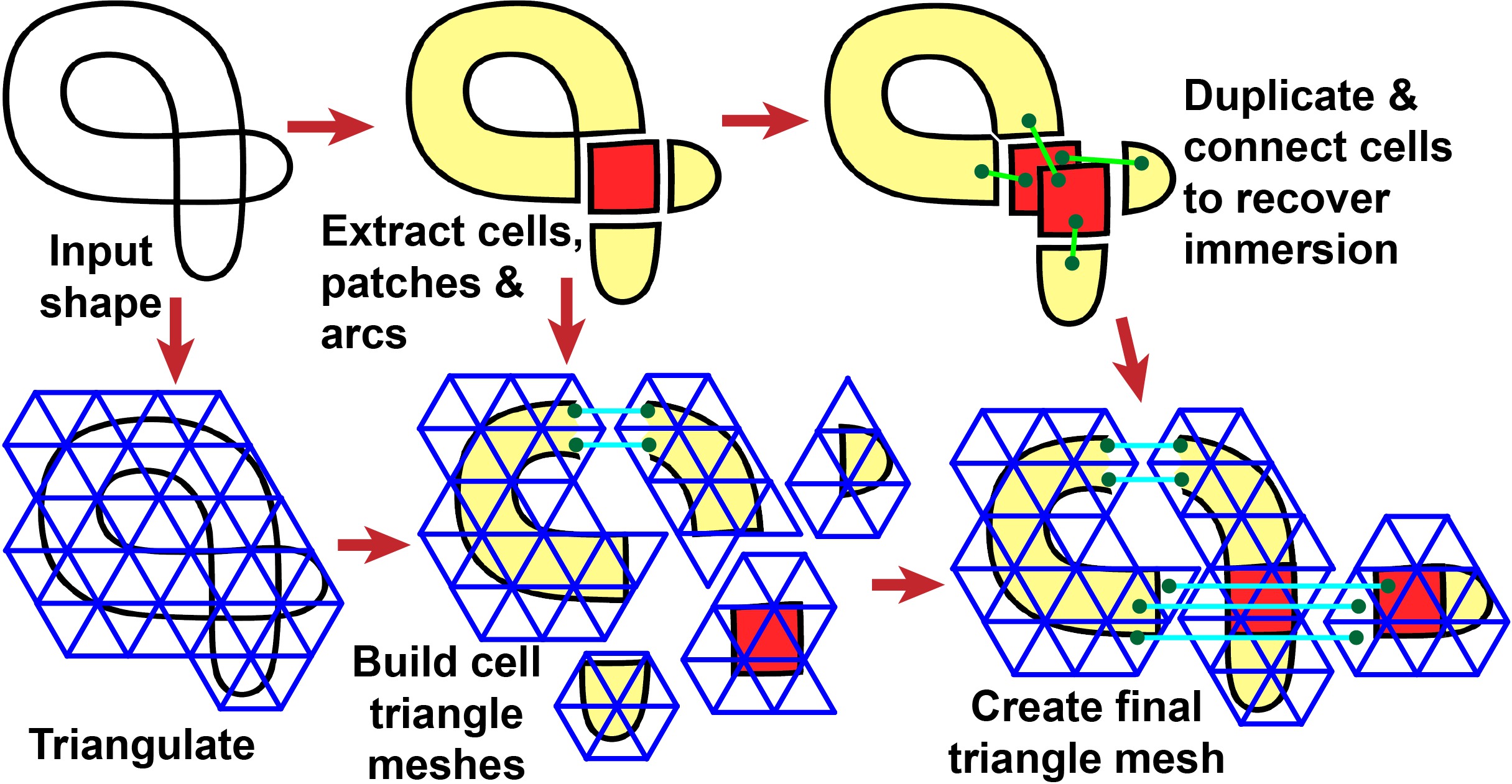 Immersion of Self-Intersecting Solids and Surfaces
Immersion of Self-Intersecting Solids and Surfaces
ACM SIGGRAPH 2018

People
- Yijing Li
University of Southern California - Jernej Barbič
University of Southern California
Project material
- Paper (PDF, 12.8 MB)
- Video (Quicktime MP4, 99.8 MB)
- Supplementary Material (Topology) (PDF, 0.3 MB)
- Supplementary Material (Tetrahedralization) (PDF, 0.4 MB)
- Presentation (PPTX, 62 MB)
- Code: available in Vega FEM v4.0.
Citation
-
Yijing Li, Jernej Barbič:
Immersion of Self-Intersecting Solids and Surfaces, ACM Transactions on Graphics 37(4) (SIGGRAPH 2018), Aug 2018. BIBTEX
Abstract
Self-intersecting, or nearly self-intersecting, meshes are commonly found in 2D and 3D computer graphics practice. Self-intersections occur, for example, in the process of artist manual work, as a by-product of procedural methods for mesh generation, or due to modeling errors introduced by scanning equipment. If the space bounded by such inputs is meshed naively, the resulting mesh joins ("glues") self-overlapping parts, precluding efficient further modeling and animation of the underlying geometry. Similarly, near self-intersections force the simulation algorithm to employ an unnecessarily detailed mesh to separate the nearly self-intersecting regions. Our work addresses both of these challenges, by giving an algorithm to generate an "un-glued" simulation mesh, of arbitrary user-chosen resolution, that properly accounts for self-intersections and near self-intersections. In order to achieve this result, we study the mathematical concept of immersion, and give a deterministic and constructive algorithm to determine if the input self-intersecting triangle mesh is the boundary of an immersion. For near self-intersections, we give a robust algorithm to properly duplicate mesh elements and correctly embed the underlying geometry into the mesh element copies. Both the self-intersections and near self-intersections are combined into one algorithm that permits successful meshing at arbitrary resolution. Applications of our work include volumetric shape editing, physically based simulation and animation, and volumetric weight and geodesic distance computation on self-intersecting inputs.
Comments, questions to Jernej Barbič.Funding
- NSF (CAREER-1055035, IIS-1422869)
- USC Annerberg Graduate Fellowship to Yijing Li
Disclaimer
Any opinions, findings, and conclusions or recommendations expressed in this material are those of the authors and do not necessarily reflect the views of the National Science Foundation.
Copyright notice
The documents contained in these directories are included by the contributing authors as a means to ensure timely dissemination of scholarly and technical work on a non-commercial basis. Copyright and all rights therein are maintained by the authors or by other copyright holders, notwithstanding that they have offered their works here electronically. It is understood that all persons copying this information will adhere to the terms and constraints invoked by each author's copyright. These works may not be reposted without the explicit permission of the copyright holder.
Unique accesses: